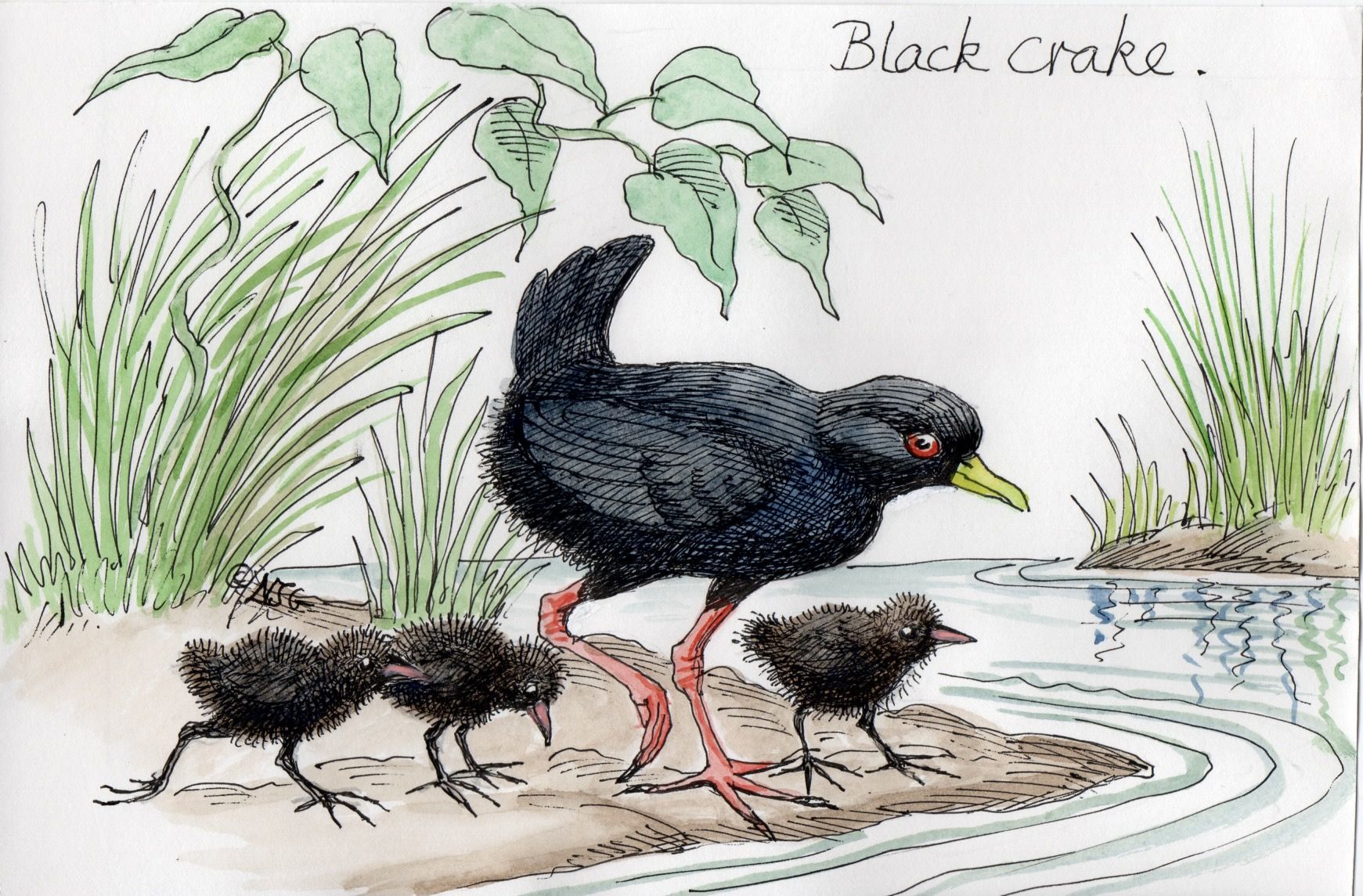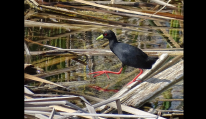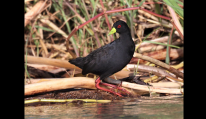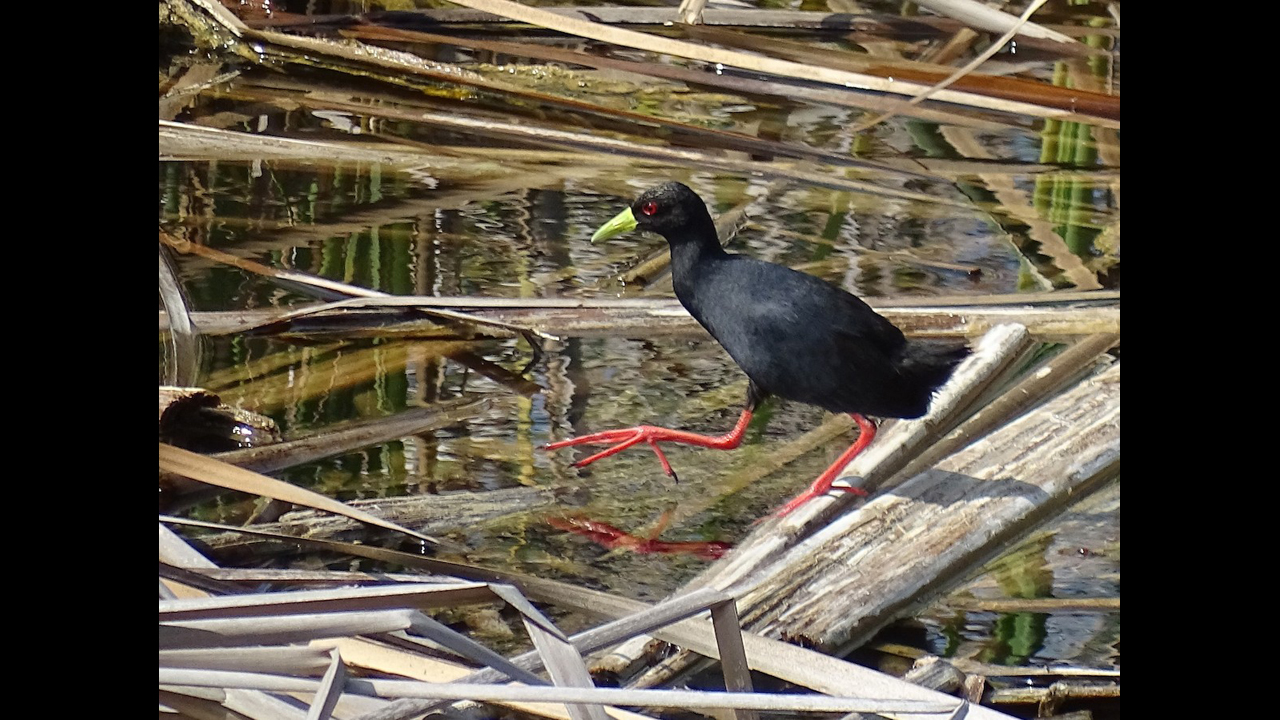Social Structure
This bird is often found in pairs or small groups and its robust legs come in handy when fighting rival birds. Chicks from a previous round of nesting will help raise the current brood and sometimes will stay with their families until the end of the breeding season.
Communication
Two or more birds may form a circle facing inwards and call to each other in a distinctive duet.
Behavior
Unlike other rails, black crakes are frequently out and about during the day as they look for their next meal. They also make themselves at home perching on a hippopotamus or water buffalo to glean for parasites.
Conservation
Least concern
Diet
Black crakes search for their meals in freshwater wetlands of all types, and consume worms, shellfish, crabs, insect larvae, fish, frogs, tadpoles, and seeds. They also prey on heron eggs and nestlings and other small birds. However, they are extremely adaptable and will forage on dry ground and in grass, and scatter leaves and vegetation while searching for food.
Breeding
Building a nest is a family affair for monogamous black crakes, which are sometimes assisted by offspring from a previous brood. They construct bowl-shaped nests in wetland reeds or other vegetation; the nest is usually elevated over the water, but can also be concealed in vegetation along the shoreline. Chicks leave the nest for the first time several days after hatching and are cared for by parents and siblings for at least three to six weeks.
Friends & Foes
Black crakes have adapted to human landscapes and can be found around artificial wetlands.
Population in Kenya
Black crakes most commonly are seen in the southern part of Kenya.
Range & Habitat
Black crakes are found in freshwater wetlands and ponds throughout most of sub-Saharan Africa,
Black crakes favor freshwater wetlands and ponds, but can also live in dry areas as long as there is a stream with some vegetative cover. They have adapted to disturbed landscapes, and human activity does not interfere with their foraging.





